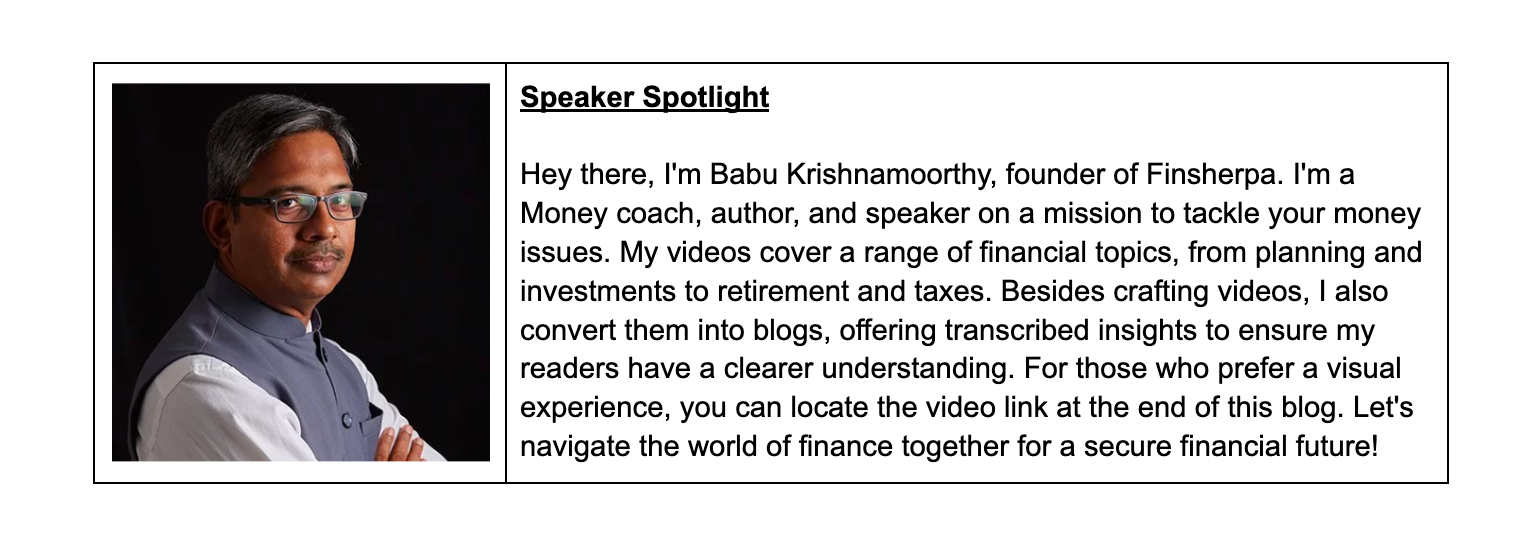_-_finsherpa_1736248314.jpg)
Antifragile by Nassim Taleb - Life, Business, and Investing Lessons to Build Resilience
Posted By: Blog

In a world of uncertainties, Nassim Nicholas Taleb’s book Antifragile: Things That Gain from Disorder presents a groundbreaking perspective on thriving amidst chaos. This isn’t just about surviving challenges; it’s about growing stronger because of them. Let’s delve into some of the profound insights from Antifragile and explore how Taleb redefines resilience and growth through unpredictability.
Antifragile by Nassim Taleb - Lessons for Life, Business & Investing
Who Is Nassim Nicholas Taleb?
Nassim Nicholas Taleb is a thought leader renowned for his work on randomness, uncertainty, and decision-making. His influential books, such as The Black Swan and Fooled by Randomness, have reshaped the way we think about risk and uncertainty. Antifragile stands out as a masterclass in understanding how systems, individuals, and organizations can not only resist shocks but also gain from them.
Fragile, Resilient, and Antifragile: The Spectrum of Response
Taleb introduces three categories to describe how systems respond to stress:
Fragile
Fragile systems are easily damaged by stress. For example, consider a senior corporate executive whose livelihood is tied to external stability. One disruptive event, such as a market downturn or organizational restructuring, can have catastrophic consequences for their career.
Resilient
Resilient systems can withstand shocks but remain unchanged. A taxi driver is a prime example of resilience, as their income relies on small, manageable risks spread across multiple customers. They may not grow stronger from challenges, but they persist.
Antifragile
Antifragile systems thrive under stress. Think of a YouTuber whose audience grows regardless of whether the feedback is positive or negative. Criticism, in this case, fuels their popularity, making them stronger.
Check out the video link for a more in-depth understanding
The Danger of Naive Intervention
One of Taleb’s pivotal ideas is the concept of naive intervention, where excessive efforts to prevent harm can inadvertently weaken a system. Overwashing hands or overusing antibiotics, for example, can harm natural immunity. Taleb emphasizes the importance of balance, allowing systems to encounter manageable stressors to maintain and build their strength.
Concavity and Convexity: The Role of Risk
Taleb uses the concepts of concavity and convexity to explain risk exposure:
Concavity
Concave systems suffer disproportionately from stress. For example, driving involves countless small, low-probability risks that, when aggregated, could lead to a catastrophic accident. The impact of one major event far outweighs the cumulative effect of smaller risks.
Convexity
Convex systems, on the other hand, benefit disproportionately from stress. For instance, lifting heavy weights at the gym creates micro-tears in muscles, which heal stronger over time. The benefits of stress outweigh the initial damage.
How to Build Antifragility
Redundancy: Nature’s Safety Net
Nature offers countless examples of antifragility. Consider human kidneys—we have two, even though one can sustain life. This redundancy ensures survival under stress.
Encouraging Small, Independent Errors
Instead of avoiding risks altogether, allow systems to experience small, independent failures. These smaller stressors are less catastrophic and offer valuable lessons, reducing the likelihood of a single, devastating event.
Diversification
Diversifying efforts and investments across different areas creates robustness. When one pathway fails, others can succeed, ensuring overall stability.
Check out the video link for a more in-depth understanding
The Barbell Strategy: Balancing Risk
Taleb’s barbell strategy offers a practical approach to antifragility. It involves combining low-risk, stable investments with high-risk, high-reward opportunities. This balance ensures security while still embracing uncertainty for potential growth.
The Lindy Effect: Survival Through Longevity
The Lindy Effect is a fascinating concept that suggests the longevity of an idea or practice predicts its future endurance. For example, books or technologies that have existed for centuries are more likely to survive than new, untested ones. This principle underscores the antifragility of systems that endure over time
Via Negativa: The Power of Subtraction
Taleb draws from stoic philosophy to highlight the value of subtraction. Consider what to remove instead of focusing on what to add for success. Happiness can often be achieved by eliminating known causes of unhappiness, such as toxic relationships or unhealthy habits.
Check out the video link for a more in-depth understanding
Wrapping Up
Nassim Nicholas Taleb’s Antifragile is more than just a book; it’s a guide to thriving in an unpredictable world. By understanding the principles of antifragility, we can embrace challenges, turn setbacks into opportunities, and grow stronger through adversity. Whether you’re an entrepreneur, an investor, or simply navigating life’s uncertainties, the lessons from Antifragile can empower you to not just survive but thrive.
For the complete video experience, click on this link
Category Finsherpa | Tags


